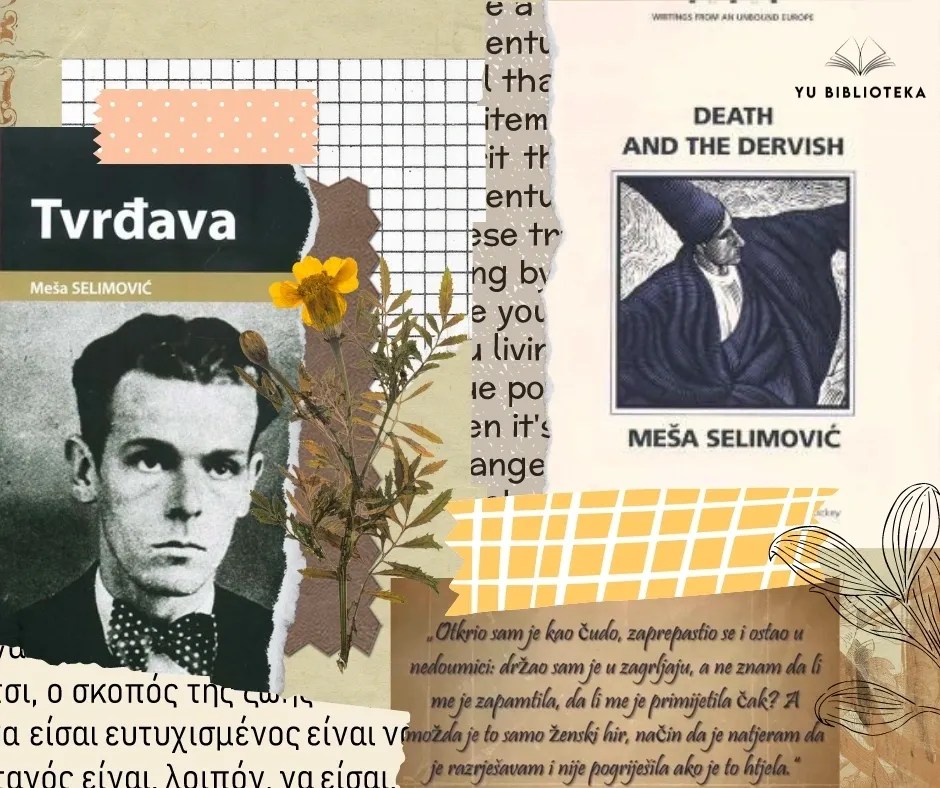Classical or Not?

Mesa Selimovic
When someone mentions classical novels, people tend to think about Russian authors like Dostoevsky, and Tolstoy, or British ones, like James Joyce, and Jane Austen, which have marked the literary field and have changed the way people read literature. Leo Tolstoy, for example, is not everyone’s cup of tea. Students would rather find a summary online than read a 600-page book, full of dress or field descriptions, with little conversation. On the other hand, some enjoy the wonderful descriptions of Karenina’s dresses, which put a reader in a certain trans, swallowing them whole in the entrancing and complex character that is Anna Karenina. “Anna was already dressed in a low-necked gown of light silk and velvet that she had made in Paris, and with costly white lace on her head, framing her face, and particularly becoming, showing up her dazzling beauty.” Tolstoy is one of the most well-known Russian authors specifically because of Anna Karenina. This author made a connection with his readers when the book was written, and even today, many find him to be one of the best writers, who inspires others to put much focus on mental illness and the struggles of an individual. Due to his specific writing style, Tolstoy was able to capture the hearts of readers around the world.
All classical authors have written wonderful works, which shaped the reader’s perspective. We as readers tend to connect to the characters in the story; the choices they make and the destiny that befalls them at the end of the book. Moreover, our hearts connect to the author who wrote our favorite work, so we research them and feel as if there is a deeper bond that creates a specific type of love between the author and reader. Especially if the author in question is from our country, and writes about the issues and topics which we can feel because we live in that society. After reading such works of literature, they are forever engraved upon our hearts. Certain writers write texts, which after we read them, leave us feeling on cloud nine and reshape our whole mindset. One of such authors, who is considered to be one of the most influential and captivating writers in Eastern Europe, is Meša Selimović.
The wholesome heart of a lonely writer

Romani Mesa Selimovic
One of the most famous Balkan and European authors is Mehmed Meša Selimović. The author has been awarded many prizes for best novels. Two of his most famous works are Derviš i Smrt (Death and the Dervish) and Tvrđava(The Fortress). Meša Selimović is a Bosnian-Serbian author, who made a significant impact on Balkan literature, because he poured his heart and soul into his works, filled with ideas of rebellion, sadness, tragedy, and the struggles of the ordinary citizen in society. His works are mostly inspired by his problems with the government and the way he was treated in society. Due to this, Meša has been able to write works that cry out his pain and where his thoughts about justice and sacrifice make a great impact on the reader.
Selimović is considered to be a writer of two nationalities- Bosnian and Serbian. His choice was to be a Serbian national but his roots are in the heart of Bosnia and Herzegovina. So, the two nations equally celebrate the authors as their own. Since 1988, the award for the novel of the year was named “Meša Selimović” and given to the winners. Even today, there are two awards carrying the author’s name, in Bosnia and Herzegovina and Serbia. Since then, the award ceremony has been held every year, to celebrate authors from the whole region.
The author was born in 1910 in Tuzla and died in Belgrade in 1982. Selimović spent most of his life fighting the political regime in his home country. He lived in difficult and turbulent times when it comes to Balkan history but makes his own history filled with rather interesting details. World War Two had a great impact on his writing. He was arrested in Tuzla during World War Two and spent 120 days in prison because he was associated with the National Liberation Movement.
One tragic factor in his life is that his brother was killed during the war. This is the event that marked Selimović forever, scarring his heart and filling his head with ideas on how he can make people see wrongful conduct and unfairness in their society. “The next day, just one day after I learned about my brother’s demise, I was supposed to teach some kind of lecture. I didn’t cancel. And that’s actually what I’m trying to forget, that I wanted to speak, that I could, that I didn’t as a man, as a brother, rebelled against this injustice.” This exact “rebellion” was the tip of the iceberg, creating an urge to write and to create a masterpiece in 1966. With his heart full of sadness and his head filled with words, Selimović started to write a novel that would reflect on how society is constructed, and what dark ideas hide behind the ones in power.

His brother’s death had a significant impact on him. So much, so that in Derviš i Smrt (Death and the Dervish) the protagonist’s brother gets killed and no one could help him. The author made unusual choices that angered the society in which he lived, but this is why he made some of his greatest works- being inspired by an unjust society. Many factors influenced Selimović to move away from his homeland, to escape the society which could not aid him, and which did not help his brother. Selimović was always the black sheep, always confronting people in power, especially the local politicians and academics. This is why he permanently moved to Belgrade in 1971.
Dervish and Society’s downfall
In 1966, Selimović published his first novel Derviš i Smrt, which is set in the Ottoman Empire. The fact is that Selimović had many enemies in the government and many people disapproved of him. Due to this, to show the society under Maršal Tito’s regime, he needed to put his story in the past. The protagonist Nuruddin, a dervish, tells the story from his point of view. The reader can get inside his head, by reading the inner monologs, which grasp the severity of the inner struggles of the protagonist.
Every chapter of the book starts with an ayah-a verse from the Quran, which gives an introduction to the chapter’s theme and opens the story for the reader in such a spiritual way. In European literature, this was the first occurrence of the Quran being extensively quoted. This, in combination with the specific point of view, intertwined with psychological and philosophical factors, makes this work a masterpiece. It is filled with existential drama, following the path of one individual, who is in search of happiness and bliss. Moreover, it shows his relationship with the government, emphasizing the pain and troubles of going against society. The struggles he has and the obstacles in his way show how society can treat one man, who tries to make a difference and fight for what is right. The representation of the dervishes is not a realistic one, nor is it a critique of a certain lifestyle. The intention Selimović had was to illustrate the dilemmas and troubles of the Bosnian people and to elevate them to more serious, global issues. This is why this book can bring people together from all around the world and resonate with them; that these issues are not ours alone. The book has universal value due to the descriptions of the Islamic rituals, Oriental ways, and the persistence and thought of one man who wants to change things and find his place in the universe.
Fortress of Solitude
In 1970, Selimović writes his second novel Tvrđava (the Fortress). The name could be connected to his own life since he was discarded from his society, culture, and home. He spent his whole life being an outcast in his society and secluded from his contemporaries. This novel is based in Sarajevo, after the Battle of Khotyn. Again, Selimović gives the reader food for thought, involving the ordinary man’s fight with death, government, and injustice. This novel shows how a person or society is closed inside, behind four walls, not being able to see what is out there. The symbol of going outside the fortress is the person’s ability to be a part of society again and be given a chance to progress and grow as an individual. The protagonist of the novel Ahmet Šabo, a soldier who lost his family, is trying to begin a new chapter in his life. His desire to gain the courage to be a part of something again is very prominent in the work itself. Through Šabo, Selimović shows the main pillars of a person’s identity and what they have to do to survive and break free from the shackles of the fortress. One of the key themes that pull the reader in, while reading this novel, is fate and being able to control your destiny. “Chance decided my fate and the path my life took, and most often I was faced with a fait accompli and fell into one of the possible currents; only a different chance could cast me into another.

Meša Selimović has had a very tragic life, but it was filled with difficult lessons learned and rebellion made. As he writes in the Fortress: “No one values their life less than a young man, and then later, the older he gets and the less reason he has for living, the more he clings to life.” His goal was to make an impact through his works so that readers can recognize certain aspects of society. These two works, mentioned above, are marked by their dark descriptions of human nature. The one common factor the reader sees is the rebellion against the inhuman treatment of people, injustice, and the internal battle of an individual.
